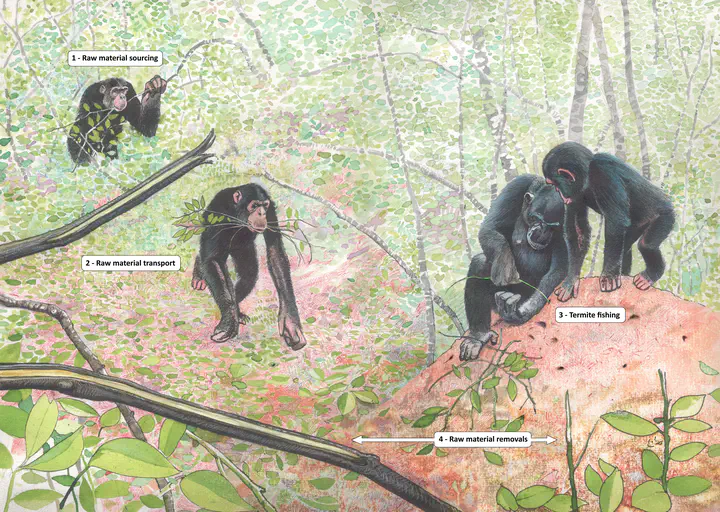Archaeology of the Perishable
 Image credit: Luis Silva
Image credit: Luis SilvaAbstract
Selection and transport of materials for tools is ubiquitous throughout our species’ evolutionary history. Yet our understanding of early human material culture is heavily skewed toward lithic technology. This poses challenges when reconstructing our technical origins, as organic raw materials, especially plants, likely played a significant role despite their absence from the record until 300 kya. Studies of plant-tool use by living apes can serve as a proxy to reconstruct such aspects of human behavior. Employing archaeological methods, we investigated raw material procurement for termite-fishing tools by three chimpanzee (Pan troglodytes schweinfurthii) populations in Tanzania: Gombe, Issa, and Mahale. All communities exploited plant sources from the immediate vicinity of termite mounds, as well as farther away, and reused them. However, at Issa, more parts were sourced per plant, with the number of removals decreasing as distance from the mound increased. These disparities are likely caused by environmental differences. Issa apes might try to minimize transport costs in what is a comparably more open and drier habitat with fewer suitable sources available near mounds. Despite similar raw material types being available, Issa and Mahale chimpanzees exclusively used bark for tool manufacture, while at Gombe, various materials were employed; these differences may reflect cultural variants. Our study highlights how environmental and cultural factors shape chimpanzee technology and identifies similarities to raw material selection processes inferred for Oldowan tool users. The archaeology of the perishable, even if at its infancy, is providing a new framework for reconstructing archaeologically invisible aspects of early human behavior and our own technological origins. Online enhancements: supplemental tables.